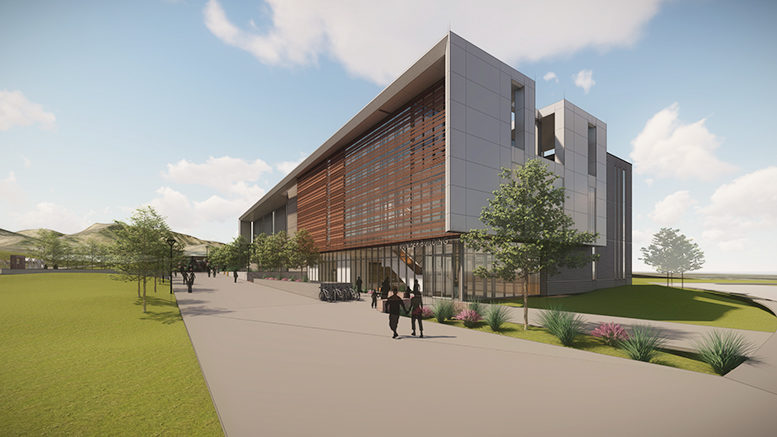There is perhaps no perfect time for community colleges to build new facilities as the pandemic and other factors impact student enrollment. Fall 2020 admission at community colleges dropped 10% from a year earlier, according to National Student Clearinghouse data from December 2020, far outweighing the 1% decline in undergraduates at public and private nonprofit four-year institutions.
However, two-year colleges won’t let perfect be the enemy of the good when it comes to campus improvement. Even as more students access hybrid learning, community colleges are getting creative with funding and partnerships to build anew or renovate current facilities.
Salt Lake Community College (SLCC) recently entered a partnership with the University of Utah on a joint $57 million campus in Herriman. The Juniper Building on the new 90-acre campus opens in Fall 2023, aiding the pursuit of higher ed in the fast-growing cities of Herriman, Riverton and Draper.
This excerpt comes from an article in the upcoming October/November issue of Community College Journal, published by the American Association of Community Colleges.
SLCC President Deneece Huftalin says learners can earn an associate and bachelor’s degree all in one location, with 2,000 students forecasted for year one and 7,000 by 2025. The facility will be utilized by both entities for general classroom and lab space as well as student service functions.
“There will be a transfer center, because the idea is to move between SLCC and the University of Utah,” Huftalin says. “The bulk of the facility will be classroom space, but you still need those other services to be successful.”
Working together for the community
Upon opening, Juniper will offer degrees in fields such as nursing, business, computer science and more. Essential student services are expected to include admissions, advising, transfer support and financial aid. Huftalin says the building and surrounding campus will meet demand for education and employment in the burgeoning southwest region of Salt Lake Valley. SLCC and its university partner lobbied for $32 million in state funding, garnering additional assets from internal reserves, private donors and local infrastructure investments. Supplementary dollars for the project were provided by the University of Utah.
Huftalin and then University of Utah President Ruth Watkins attended board of higher education and Utah legislature meetings to promote the partnership. As the schools already shared transfer articulation processes as well as federal grants for low-income learners, embarking on a new mission together has only further cemented the relationship.
“We have dedicated, focused people who are doing this for the students,” Huftalin says. “Everyone is bringing the right perspective in terms of how we do that work. The high school population in Salt Lake County is growing — for all of them to access us or the university is quite a trek across the valley. So we talked to our university partners and said, ‘Why don’t we create efficiency in one building, with services and space making it easier for students to stay in one place?’”
Now that SLCC knows it has a building, the next step is determining alongside the university how to best use it. For instance, having dedicated classes for each institution upon launch doesn’t preclude a possibility of shared classroom space down the line.
The tech component
Regardless of how space is used, technology will be a key facet of student instruction, notes Jeffrey West, vice president of finance and administration at SLCC.
Pandemic-spurred hybrid classrooms — where learners attend in person or online — will harness current learning management systems and video platforms. Network infrastructure, meanwhile, will be strengthened via new fiber networks installed throughout Salt Lake Valley.
“We’ve already put into place plans and budget to outfit technology in classrooms,” West says. “This will allow for easier two-way communication for both faculty and students, especially since more of our offerings are going online. We’re not making a big shift online outside of Covid necessity, but that technology will be part of our future.”

